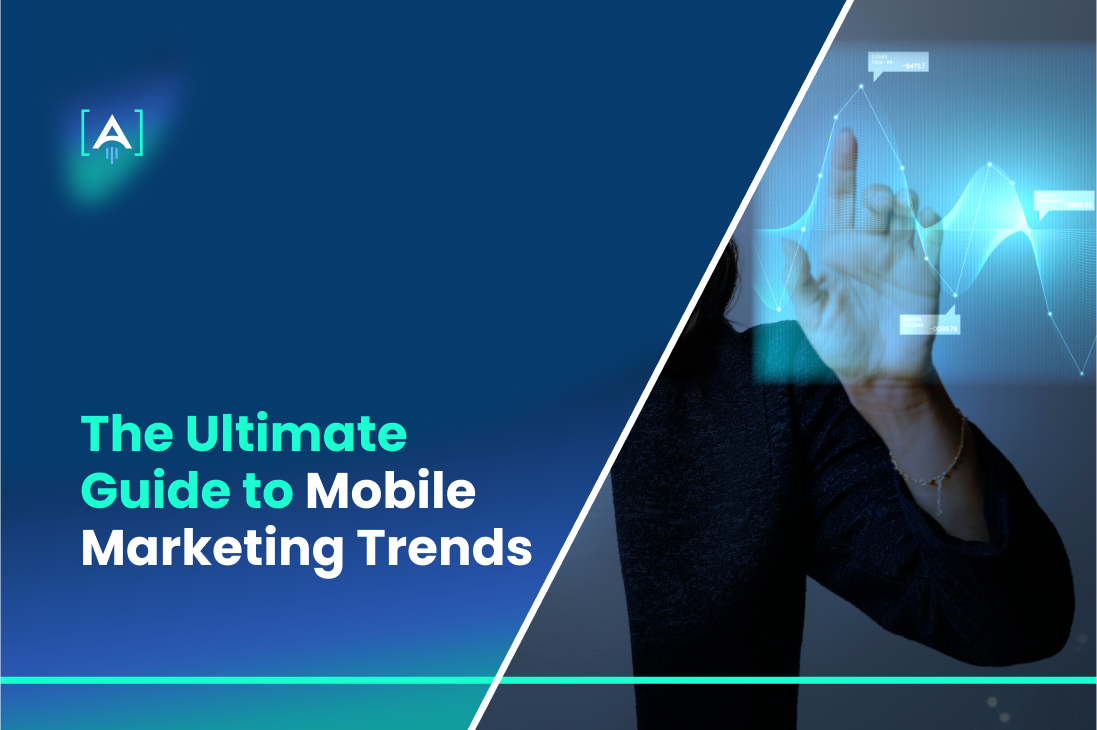Mobile marketing has become more than a nice-to-have.
It’s now a must for businesses looking to connect with their audience in today’s digital world.
With over 4 billion people glued to their smartphones, mobile marketing offers a huge opportunity to engage with customers where they spend most of their time.
Source: Statista
But with the mobile marketing trends changing so quickly, staying ahead of the game can feel overwhelming. From new technologies to evolving privacy concerns, there’s a lot to keep track of.
We’ve simplified the biggest, growth marketer-approved mobile marketing trends so you can understand what’s happening, why it matters, and how to use these trends to attract customers and create a strong retention strategy to grow your business.
Whether you’re already running mobile campaigns or just getting started, this guide will give you the tools and insights our growth marketing agency uses to boost your business in the mobile-first world.
Let’s dive in!
What Is Mobile Marketing And Why It’s Crucial?
Mobile marketing is customer-centric marketing, all about reaching people through their mobile devices—smartphones, tablets, and even wearables.
It’s more than just placing ads on apps or websites. It’s about creating a personalized, engaging experience that fits seamlessly into the way people use their phones every day.
Whether through SMS notifications, in-app ads, social media content, or mobile-friendly websites, mobile marketing meets consumers where they already are.
Mobile marketing has become the heart of how businesses connect with their audience. With smartphones being the go-to device for everything from shopping to socializing, they’ve become the primary touchpoint for customer interactions.
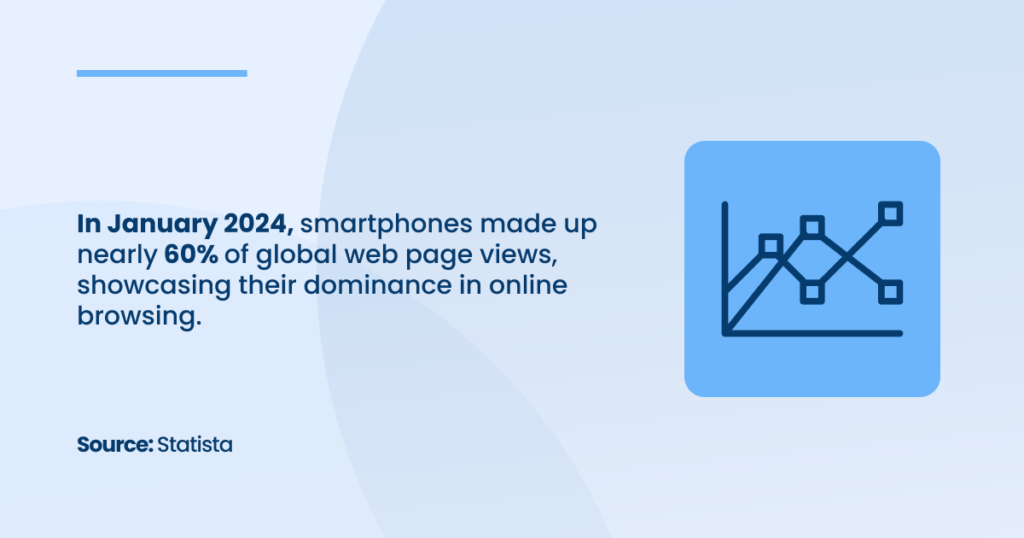
Source: Statista
The beauty of mobile marketing trends lies in their immediacy and the ability to send timely, relevant messages directly to your audience.
Whether a location-based offer or a personalized ad based on browsing habits, mobile marketing allows brands to engage with people more directly and personally.
As technology advances and consumer behaviors shift toward mobile, a solid mobile marketing strategy is no longer an option—it’s a must for staying competitive.
The Evolution of Mobile Marketing: A Data-Driven Look
Mobile marketing evolved from basic SMS promotions in the early 2000s to today’s mobile-first strategies, which dominate digital marketing.
The rise of smartphones, apps, and social media transformed how brands connect with consumers and generate demand, making mobile the primary touchpoint for businesses.
The Rise of Mobile-First Consumers
In 2024, mobile devices will be central to daily life, with nearly 60% of global web traffic coming from smartphones. Consumers will shop, watch videos, and interact with brands through their phones, making mobile-first approaches essential.
Platforms like TikTok and YouTube have shifted marketing strategies and hook models toward fast, visual content, pushing brands to meet consumers where they are.
How Privacy Regulations Have Changed the Game
Recent privacy regulations like GDPR, CCPA, Apple’s ATT, and Google’s Privacy Sandbox have forced marketers to shift away from third-party data. Now, brands must focus on first-party data and prioritize user consent, reshaping how they personalize and target ads.
Opportunities Created by 5G
The rollout of 5G technology is transforming mobile marketing, enabling faster, more immersive experiences like augmented reality (AR) and real-time interactions. As 5G expands, brands can offer richer, interactive content, enhancing how they engage with consumers.
Key Mobile Marketing Trends Beyond 2024
Advanced Personalization
Personalization has taken a huge leap in 2024. It’s no longer about broad, one-size-fits-all customization.
Thanks to AI, AR, and VR, brands are creating more interactive, engaging experiences.
Whether it’s virtually trying on makeup or receiving real-time product recommendations, personalization is enhancing the customer journey, as reflected in the trends in mobile marketing.
Source: eMarketer
Personalization is getting even cooler with AI marketing, augmented reality (AR), and virtual reality (VR). Brands are using these technologies to create interactive, immersive experiences.
Think about trying on makeup virtually with AR or getting personalized product recommendations right when you’re most likely to need them. AI in marketing is about making the customer journey convenient, fun, and engaging.
52% of customers are interested in AI that helps them navigate products or websites, while 47% want personalized deals, and 42% appreciate AI-powered product recommendations.
Source: The Alternative Board
Of course, with great personalization comes the need for great privacy. Customers want experiences tailored to them but also care about how their data is used. Striking this balance is key.
Companies like Apple lead the way by offering transparent privacy settings while delivering personalized content. If customers trust you with their data, they’re more likely to stick around—and that’s where personalization really shines.
Privacy-First Mobile Marketing
Privacy laws like GDPR and CCPA reshape how businesses collect and use data, emphasizing user consent and transparency.
Brands must rethink their data strategies to stay compliant while keeping marketing effective.
With third-party cookies fading out, businesses are focusing on first-party data—gathered from app usage, purchases, and surveys.
Offering personalized experiences or exclusive offers in exchange for this data builds trust while being clear about how it’s used.
Technologies like differential privacy and federated learning allow businesses to analyze customer behavior without compromising individual privacy, ensuring personalized marketing that respects user data while following the mobile marketing trends of privacy-first strategies.
Mobile Commerce (m-commerce)
M-commerce is booming, with 56% of global eCommerce sales happening on mobile devices, and it’s expected to reach $710.4 billion by 2025. To make the most of this trend, optimizing for mobile is key. Here’s how to succeed:
Source: Gauss.hr
Optimize Your Mobile Experience
Consumers increasingly use mobile apps for a seamless shopping experience. To capitalize on this, focus on:
- Smooth Navigation: Make your app or site easy to use with simple layouts and quick product searches.
- Mobile-Friendly Payments: Offer one-tap options like Apple Pay or Google Pay for fast checkouts.
- Speedy Checkout: Keep forms short and enable one-click purchases for higher conversions.
- Easy Returns: Simplify returns to build trust and encourage repeat business.
Leverage Social Commerce
With 55% of social media users making purchases via platforms like Instagram and TikTok, it’s crucial to:
- Shoppable Posts: Let customers buy directly from your posts.
- Exclusive Drops: Offer limited-time promotions and product drops through social apps.
- Influencer Partnerships: Drive traffic and sales through influencer collaborations.
As mobile shopping grows, brands that offer a smooth, mobile-first experience will lead. Focus on a seamless user journey, from discovery to purchase, to boost sales and create loyal customers.
Harness User-Generated Content (UGC)
User-generated content (UGC) is a powerful way to build trust and authenticity with your audience. Studies show that consumers are more likely to engage with and trust real users’ content than traditional ads. UGC boosts engagement, provides social proof, and helps create a community around your brand.
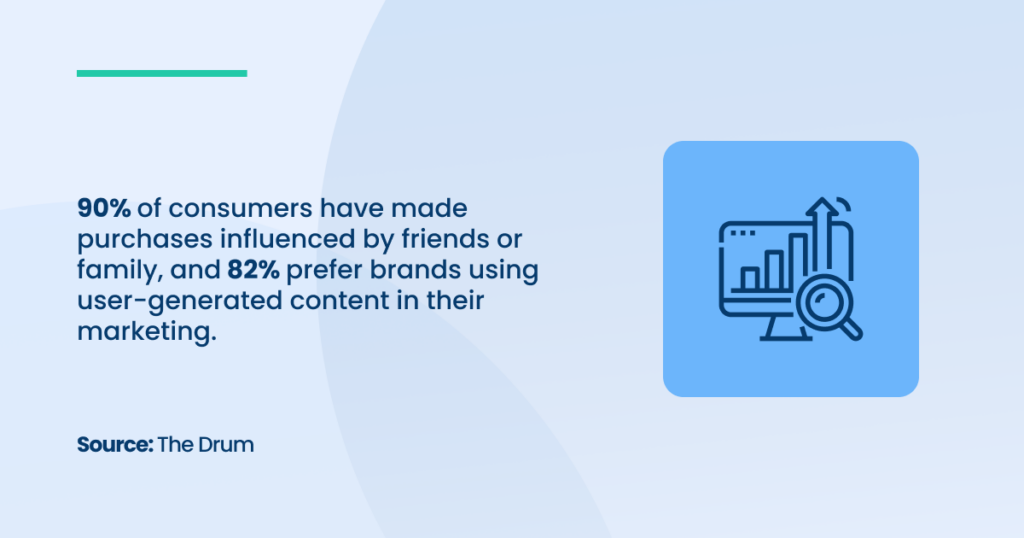
Source: The Drum
Strategies to Source UGC:
- Organically: Encourage your audience to share their experiences by using branded hashtags, hosting photo contests, or featuring user content on your official channels. For example, invite customers to post photos of themselves using your products in exchange for a chance to win a prize.
- Managed Creation: If you need to scale up quickly, consider partnering with agencies that specialize in sourcing UGC from content creators. This ensures you have a steady stream of fresh content that feels authentic, while still meeting your brand’s quality standards.
Using UGC in Ad Campaigns: Leverage UGC in your mobile ads by incorporating it into your creatives. For example, include real customer testimonials or photos in your Instagram Stories ads or TikTok campaigns. This strategy boosts credibility and drives higher conversion rates, as potential buyers see real users endorsing your product.
Maxime Mobile Video Content and Short-Form Videos
Platforms like TikTok, YouTube Shorts, and Instagram Reels have transformed how consumers engage with video content.
Short-form videos are quick, digestible, and have high engagement rates, making them perfect for capturing attention on mobile devices.
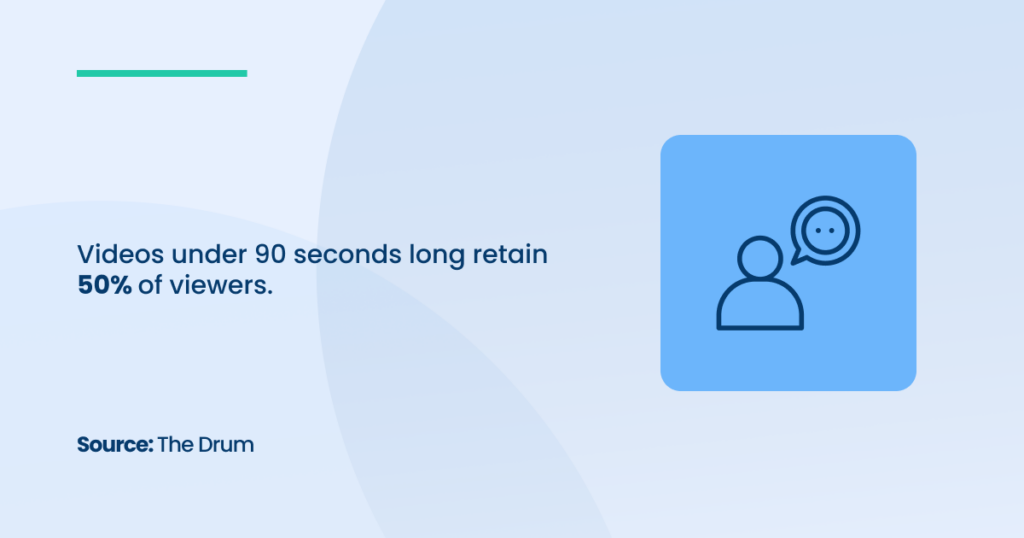
Source: HubSpot
Best Practices for Effective Video Marketing:
- Keep It Short and Sweet: Aim for videos between 15 – 60 seconds and try to grab attention in the first 2.7 seconds to keep viewers engaged.
- Mobile-Optimized Storytelling: Focus on simple, relatable narratives that align with your brand. Whether it’s a behind-the-scenes look at your product or a quick how-to, create content that resonates with your audience.
- Format for Vertical Viewing: Design your videos for vertical viewing to optimize for platforms like TikTok and Instagram, where most users consume content in portrait mode.
Shoppable videos are becoming a game-changer for mobile commerce, allowing viewers to tap on a product in the video and buy it instantly.
This shortens the path through the conversion funnel, from discovery to purchase, boosting conversions, reducing customer churn, and staying in line with the evolving mobile marketing trends.
For example, showcase a product in a short video and let users tap to buy it instantly. This interactive approach simplifies the shopping process and increases conversions.
By embracing these content trends—UGC, short-form video, and interactive shoppable content—you’ll engage your mobile audience, build trust, and drive conversions.
Exploring In-Game Advertising and CTV Integration
In-Game Advertising: A Goldmine for Brands
Mobile gaming is exploding, with billions of players worldwide. It’s a massive opportunity for advertisers to tap into a highly engaged audience. Games provide an immersive environment, making it easier to connect with users in a fun, non-intrusive way.
Types of In-Game Ads:
- Banner Ads: Small ads that appear during gameplay without interrupting the flow.
- Interstitial Ads: Full-screen ads that show up between game levels.
- Rewarded Ads: Ads players watch voluntarily in exchange for in-game rewards, creating positive brand interaction.
How to Target Gamers Effectively: Gamers are diverse, from casual players to dedicated fans. To connect with them, your ads must fit seamlessly into the game without disrupting the experience. Offer rewards or time your ads during natural breaks to make the most impact.
Connected TV (CTV) and Mobile Integration
Connected TV ads are displayed on internet-enabled TVs, offering a more interactive and targeted experience than traditional TV ads.
By linking these ads to mobile, brands can create seamless cross-device campaigns, allowing viewers to see an ad on TV and interact further on their mobile devices.
Maximizing CTV with Mobile: Follow up CTV ads with mobile retargeting and track engagement across both platforms to refine your strategy.
As more brands explore trends in mobile marketing, seamless cross-device advertising will play a crucial role in boosting campaign success.
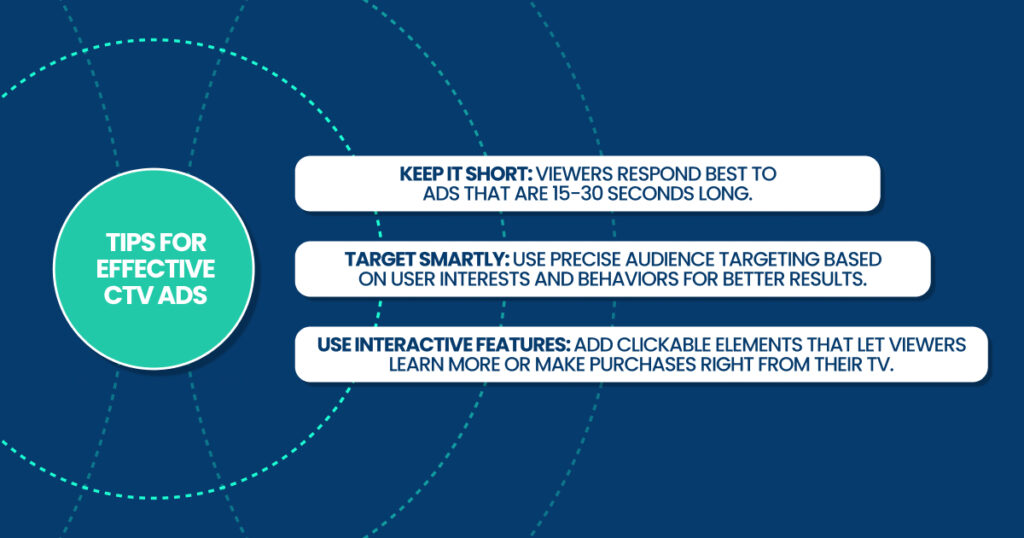
Influencer and Social Media Marketing on Mobile
Influencer marketing continues to thrive, especially with micro and nano influencers. These influencers may have smaller followings but offer a deeper connection and more trust with their audience. They’re perfect for mobile marketing because their recommendations often feel more personal and relatable, leading to higher engagement and conversion rates.
How To Choose The Right Influencers?
- Relevance: Pick influencers whose content fits your brand and speaks to your audience.
- Engagement: Focus on those with high engagement, as they have active, loyal followers.
- Authenticity: Choose influencers who produce genuine content that feels real, not forced.
Leveraging Social Media for Mobile Sales: Platforms like Instagram, TikTok, and YouTube are perfect for mobile sales through influencers. With trackable links and discount codes, brands can measure the success of their influencer campaigns and see real ROI.
Gamification and Interactive Content
Gamification taps into our love for rewards and competition. It turns ordinary tasks into fun, interactive experiences that keep users engaged and coming back.
Gamification Strategies:
- Reward Systems: Offer points or discounts for actions like purchases or app interactions.
- Challenges: Create fun challenges that encourage users to compete for rewards.
- Interactive Elements: Quizzes, polls, or mini-games can make your campaigns more engaging and memorable.
Success Stories: Brands like Nike and Starbucks have nailed gamification. Nike’s fitness challenges and Starbucks’ rewards programs keep users engaged and drive repeat sales.
Key Metrics for Mobile Marketing Success
To track the success of your mobile marketing campaigns, focus on these key performance indicators (KPIs):
- Mobile App Retention: How many users return after their first visit?
- Click-Through Rate (CTR): The percentage of users who click on your ads.
- Cost Per Acquisition (CPA): How much does it cost to gain a new customer?
- Customer Lifetime Value (CLV): The total value a customer brings to your brand over time.
Boost your ROI by using A/B testing to see what works best, gathering user feedback to improve the experience, and leveraging data-driven marketing insights to optimize your campaigns for better results.
Stay Ahead with Expert Mobile Marketing Strategies
Advanced personalization, privacy-first strategies, the rapid growth of mobile commerce, and the rise of short-form videos, user-generated content, and gamification are shaping today’s mobile marketing landscape.
As these mobile marketing trends change, businesses that stay flexible and adjust their strategies will thrive.
But keeping up with these fast-moving trends can be tough. That’s why working with a trusted growth marketing agency is so important.
At [A] Growth Agency, we help brands easily navigate trends in mobile marketing with a data-driven approach. Our team specializes in mobile strategies, personalized marketing, and performance optimization so your business can stay ahead.
Ready to elevate your mobile marketing?
Get your Free Personalized Marketing Plan and start growing your business faster.
